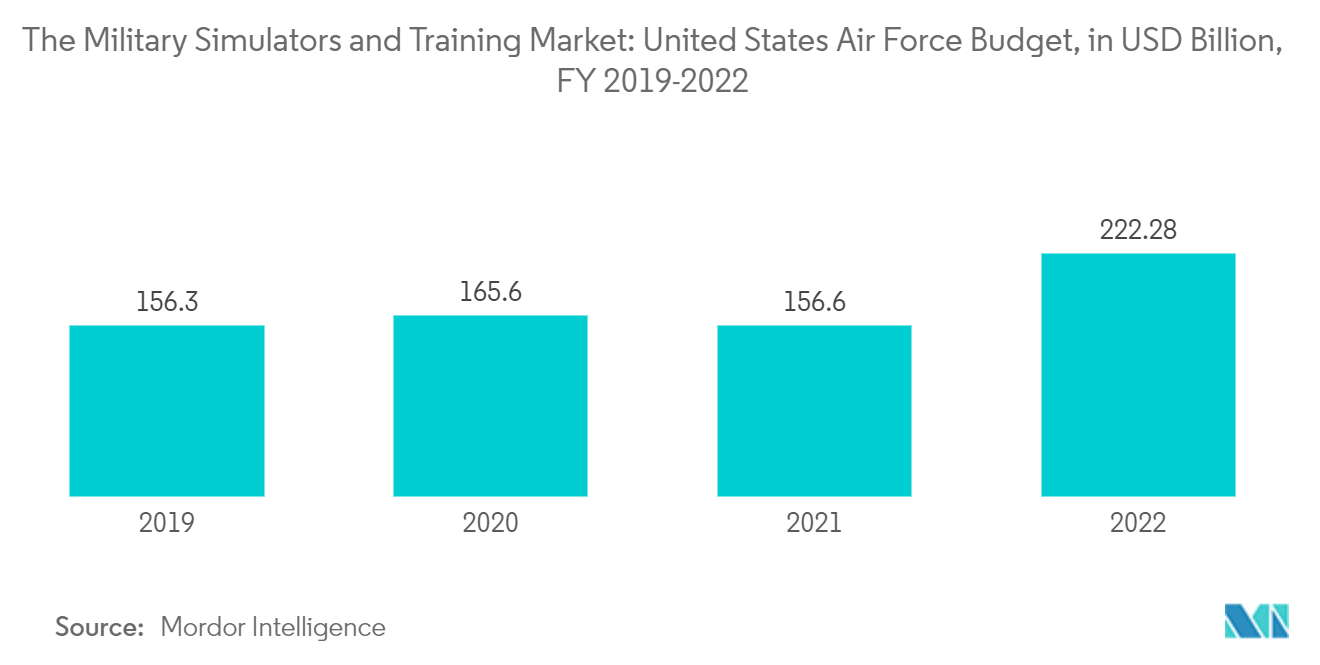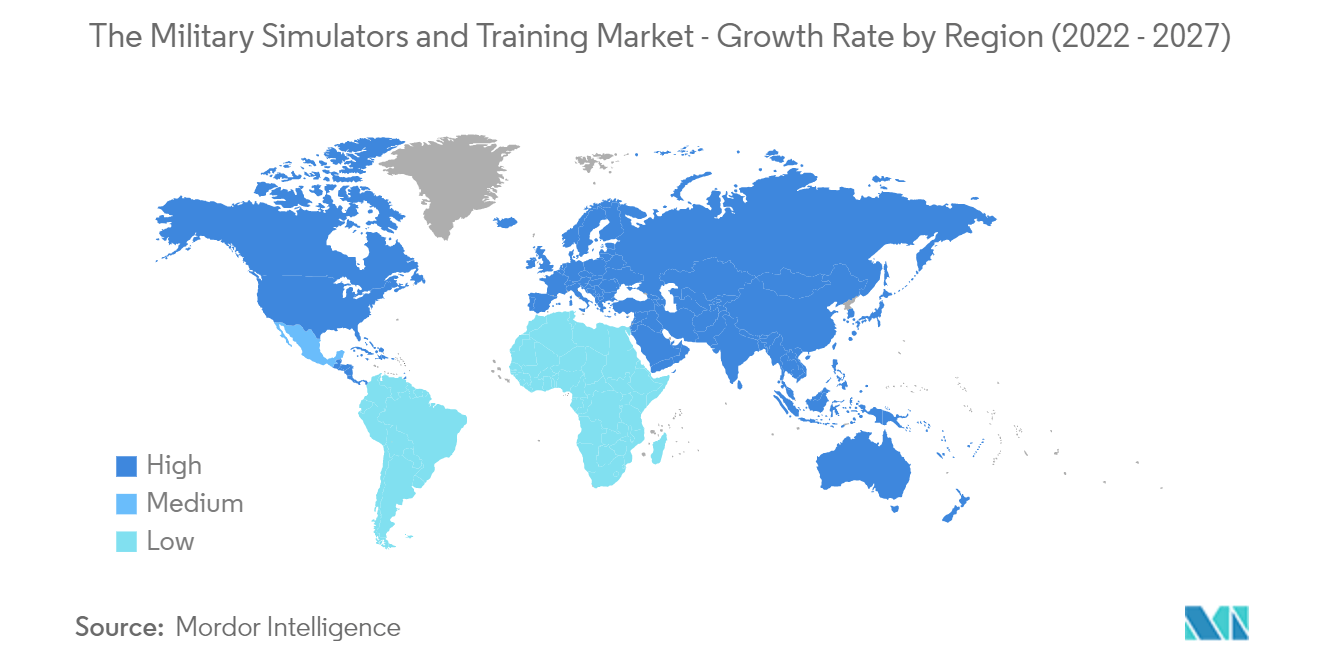Market Trends of Military Simulation and Training Industry
This section covers the major market trends shaping the Military Simulation & Training Market according to our research experts:
The Air Segment is Expected to Experience the Highest Growth During the Forecast Period
The Air segment of the market held the largest market share in 2021. The segment is also expected to register the highest CAGR during the forecast period, majorly due to the complexity and risk involved in operating the aircraft compared to the other end users. For example, a single mistake by pilots on board a military aircraft while landing or take-off will cost the lives of people on board and result in the loss of sophisticated military property and compromise the mission. Such complexity has forced the military authorities to incorporate simulator-based training for pilots. Moreover, the increasing adoption of newer aircraft that incorporate complex technologies in the military may require pilots to familiarize themselves with the latest equipment and systems. In such situations, providing hands-on experience may be difficult due to high-cost involvement. In such cases, the simulators act as the preferred option. For instance, the operating cost of the USAF’s F-35A is estimated to be about USD 44,000 per flight hour. In this regard, the F-35 pilots are first trained on simulators instead of the actual aircraft, which helps in cost-cutting. Pilots are typically trained for about 30 hours on the F-35 full-mission simulators before getting airborne on their first sortie in the F-35. Lockheed Martin is also planning to connect full-mission simulators in the United States and the United Kingdom through a software upgrade, allowing the Air Force pilots in these countries to virtually train with one another across international borders. Furthermore, the USAF aims to deploy and connect more full-mission simulators in the years to come. Such initiatives also help the militaries increase interoperability without conducting joint military exercises on actual aircraft. With the interest of the defense departments of major countries in utilizing flight simulator training, the demand for simulators that cater to the needs of aircraft and military pilot training is skyrocketing. As a result, new purchases and product innovations to supply the most advanced military aircraft training activities have been taking place in the market. For instance, Lockheed Martin is planning to connect full-mission simulators- in the United States and the United Kingdom through a software upgrade, allowing the Air Force pilots in these countries to virtually train with one another across international borders. Furthermore, the USAF aims to deploy and connect more full-mission simulators in the years to come. Such initiatives also help the militaries in enhancing interoperability without conducting joint military exercises on actual aircraft, which is expected to drive the market growth during the forecast period.

North America Held the Largest Market Share
The United States had a total military expenditure of USD 801 Billion in 2021. The Armed Forces of the country are procuring several newer generation military vehicles across the land, air, and sea-based platforms, amidst the ongoing race for technological superiority. Simultaneously, the country is investing in the development and procurement of related simulator solutions, which is expected to drive market growth in the region. Although the US Air Force has been procuring simulators on a large scale for several years, the US Navy is investing heavily in simulation to improve its navigation training, and it budgeted for new integrated bridge simulators to fill the capacity gaps. The efforts to increase ship simulator capacity are further supported by constructing new buildings in San Diego and Norfolk to house multiple simulation facilities. The Royal Canadian Air Force plans to combine two training programs under a single, multibillion-dollar project, the Future Aircrew Training program, or FAcT, where the number of pilots trained annually will increase.
Furthermore, the government of Canada, with plans to implement fire training simulators for military uses, has offered to stand offered to VirTra, Inc. in December 2021. As per the offer, the company is expected to supply advanced military training simulators to the country’s land, marine, and air force divisions of the military. Such developments are expected to drive the growth of the market in the North American region during the forecast period.

